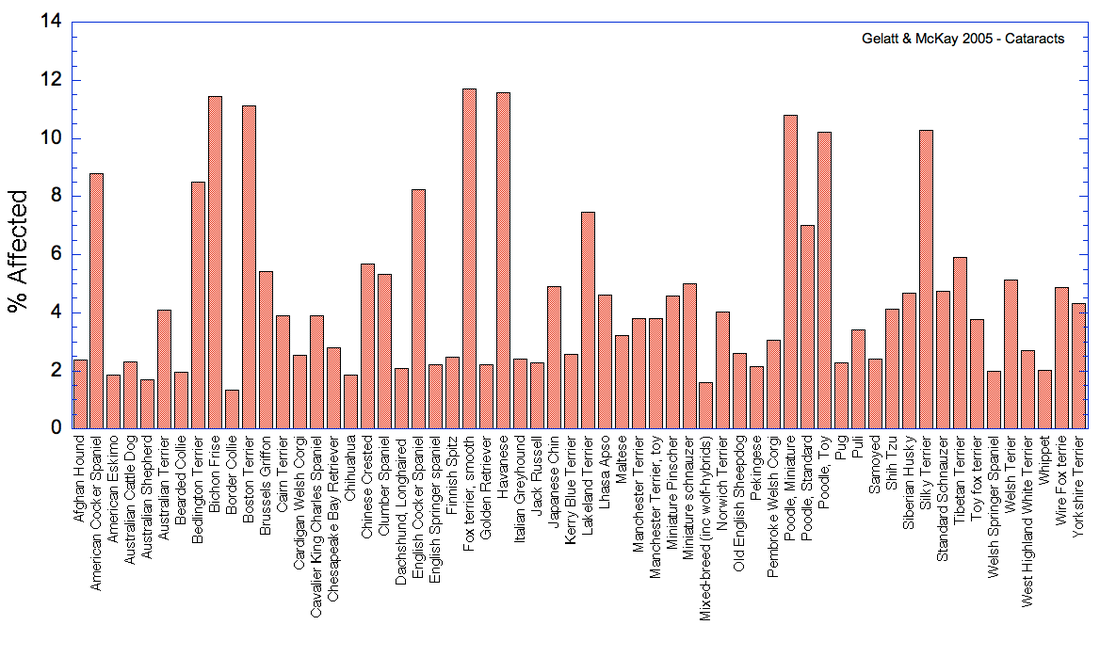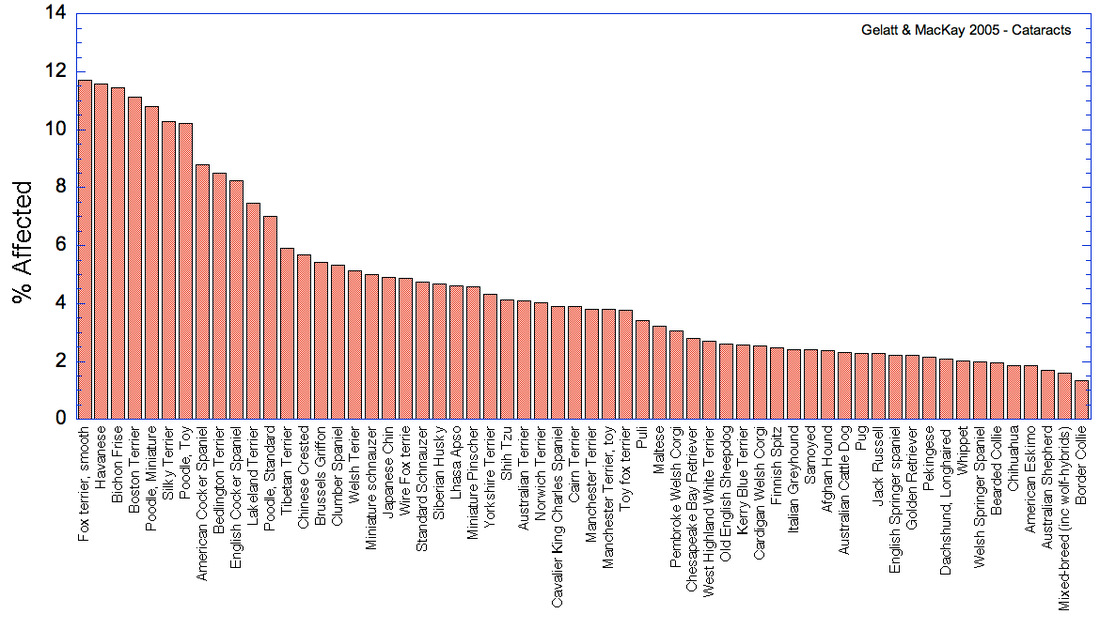Cataracts in Dogs
by Carol Beuchat PhD
Data from -
"A retrospective study of all dogs presented with cataracts to veterinary medical teaching hospitals in North America between 1964 and 2003 was conducted to determine cataract prevalence... From 1964 to 2003 the prevalence of cataract formation in this patient population increased by about 255%. Fifty-nine breeds of dogs were affected with cataracts above the baseline prevalence of 1.61% seen in mixed-breed/hybrid dogs...Gender ratios of cataractous dogs seemed to affect limited breeds. Age of presentation with cataract diagnosis varied among several breeds. In the mixed-breed/hybrid baseline population, cataract formation appeared to be age related with a higher frequency of cataract formation in dogs after 4–7 years. Cataract formation is one of the most prevalent eye diseases in the dog population, and in about 60 breeds of dogs the prevalence of cataract exceeds that of the baseline mixed-breed/hybrid group."
- Gelatt KN and EO MacKay 2005 Prevalence of primary breed-related cataracts in the dog in North America. Vet Ophthal 8(2): 101-111.
"A retrospective study of all dogs presented with cataracts to veterinary medical teaching hospitals in North America between 1964 and 2003 was conducted to determine cataract prevalence... From 1964 to 2003 the prevalence of cataract formation in this patient population increased by about 255%. Fifty-nine breeds of dogs were affected with cataracts above the baseline prevalence of 1.61% seen in mixed-breed/hybrid dogs...Gender ratios of cataractous dogs seemed to affect limited breeds. Age of presentation with cataract diagnosis varied among several breeds. In the mixed-breed/hybrid baseline population, cataract formation appeared to be age related with a higher frequency of cataract formation in dogs after 4–7 years. Cataract formation is one of the most prevalent eye diseases in the dog population, and in about 60 breeds of dogs the prevalence of cataract exceeds that of the baseline mixed-breed/hybrid group."
Percentage of dogs by breed affected by cataracts.
- Top - alphabetically
- Bottom - by % affected



